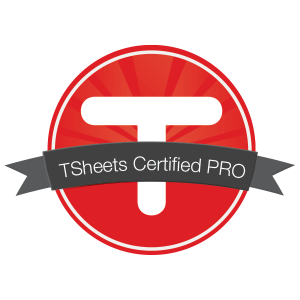Keeping track of how you and your workers spend time is one of the most important things you can do in your business. Labor costs can be a large portion of expenses, and understanding how time is spent can help you manage your business better in a multitude of ways.
Benefits of Time Tracking
There are many reasons and benefits to track time:
- If you price by the hour, time tracking is mandatory, because without it, you won’t be able to invoice your clients accurately.
- Tracking time helps managers understand how long a task should take, where employees may need training, and where processes and procedures may need improving.
- Information on time reports can be fed into a project management system and reviewed to make better fixed fee pricing estimates on future jobs and customer proposals.
- Time tracking feeds into job costing for construction companies.
- For manufacturing businesses, time tracking feeds into labor reports.
- Time tracking is used in payroll systems to pay hourly workers accurately.
- Time tracking can increase accountability among workers as they become more aware of how they spend their working time.
- When time is budgeted in advance, actual hours worked can be compared to see how the budget is used and whether it was too much or too little.
- Time tracking allows managers and business owners to determine when they need to hire additional staff because the backlog has become too large.
What Is Time Tracking?
Time tracking is the recording of how you spend your time. You can use paper, a spreadsheet, or time tracking software to log the task you are working on and the length of time you worked on it. For example, here’s a simplistic example of a time log, or timesheet, for one day:

Employees may be required to complete timesheets on a daily or weekly basis, which are then turned into their managers and payroll administrators.
Managers can take time tracking to the next level by adding hourly payroll costs as well as the employee’s hourly billing rate to gain insight into further time-tracking financial metrics.
Time Tracking Software
There are many different types of time-tracking software:
- A time clock allows employees to “punch in” when they arrive for work and “punch out” when they leave. This type of machine is mostly used for payroll in a manufacturing setting.
- Time tracking applications allow workers with computers to enter their time via the application. In some cases, workers can enter their time via a mobile device.
- Some companies will have their time tracking function embedded into their project management, job costing, or billing system. Employees would then enter their time via those applications.
Getting Employees on Board with Time Tracking
Reporting your hours in a time-tracking system is one of the least favorite tasks of employees and requires an education in mindset and attitude more than any software instructions. It’s important that your employees do not feel like you will be “Big Brother” when it comes to using their time data.
For best results, let employees know how the timesheet data will be used. Allay their fears that they will not get fired or in trouble if they feel something “took too long,” which can often translate into an employee “fudging” their hours on a task where they might have made a mistake. Make sure they know they won’t be penalized in any way for what they report.
Communication is key in getting employees to report their time accurately so that managers and owners can receive meaningful information. Have managers tie time tracking to an employee’s personal career goals to increase adoption and reduce resistance.
Personal Time Tracking
Time is our most precious commodity, and tracking your personal time can give you insights into how you are investing in yourself. Some really interesting questions can be considered when you have some time data for yourself.
- How much “downtime” do you need each day?
- How much time are you spending on your life goals?
- Are you spending time on what you consider to be important?
Getting Started with Time Tracking
If you’re considering time tracking or would like to take your current time-tracking function to the next level, please reach out. We may be able to help with integration, implementation, the accounting aspect of time-tracking, and financial metrics and reports.



 Want a free consultation with us? Give us a call or send us an email to claim your complimentary consulting session.
Want a free consultation with us? Give us a call or send us an email to claim your complimentary consulting session.




